Learn all about Spigelian Hernia, its location, causes, symptoms, CT scan images, and all its repairing procedures. A Spigelian hernia is also known as “lateral ventral hernia”. It develops in the muscle in the walls of the abdomen.
Spigelian Hernias are rare and generally they are difficult to diagnose as the symptoms are vaguely non-specific. These are situated between the muscular walls of the abdomen and can easily be seen because of abdominal obesity. These can be examined by ultrasonography and by computed tonography (CT)
Basically, Spigelian Hernias were described by Adrian Van Der Spiegel and hence named as Spigelian Hernia. As these are mostly intraparietal this makes them difficult to diagnose. Sometimes these may be asymptomatic and discovered incidentally at the operation. Although abdominal swelling and pain are the main symptoms.
Spigelian Hernias are associated with abdominal wall hernias. According to research, it is known that sometimes Spigelian Hernias also accompany ipsilateral both direct and indirect inguinal hernias in males. These are treated by open surgery with the use of polypropylene mesh.
Although the exact etiology of SH is uncertain, various predisposing factors include obesity, pulmonary diseases, aging, collagen disorders, chronic obstruction, trauma, ascites and rapid weight loss. Several laparoscopic techniques are used for the repairing procedure. Also, total extra peritoneal procedure (TEP) is used for the repair of Spigelian hernias.
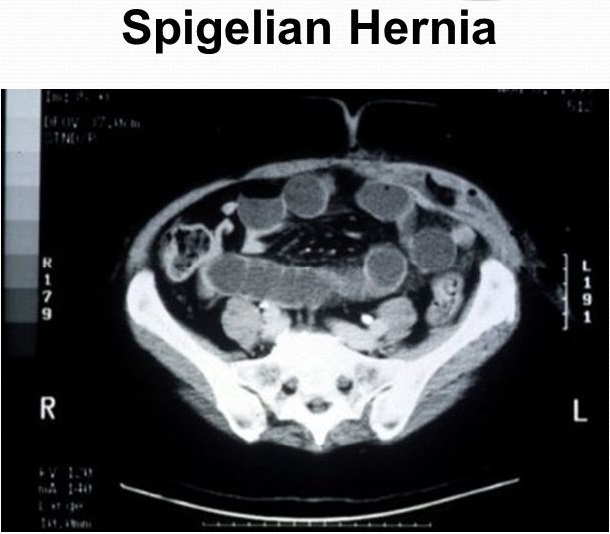
Spigelian Hernia Symptoms, Causes, Repair
Spigelian Hernia occurs through the slit like a defect in an anterior abdominal wall. It has been estimated that it constitutes about 0.12% of the abdominal wall hernias. Its symptoms can vary from abdominal pain, lump in interior abdominal wall or patient may have incarceration. Pain may be severe and often can be provoked by maneuvers that increase intra-abdominal pressure and can be relieved by rest. It can be caused by trauma, injury, chronic coughing or due to heredity. Surgically it is repaired, since it is prone to strangulation, conventional or laparoscopic surgeries may be used in the repairing procedure.
What is Spigelian Hernia?
Spigelian Hernia or lateral ventral hernia is the rare type of a hernia that develops through the Spigelian fascia. It is the aponeurotic layer that is the layer of flat broad tendons that join the muscles and it is located between the rectus abdominous muscle and semi-lunar line.in other words, it is the protrusion of peritoneal fat or sac of an organ which has any congenital defect or weakness in Spigelian fascia. It represents approximately 1-2% of all a hernia and women are mostly affected and more likely to occur after the age of 50 years.
Spigelian Hernia Symptoms
- Repetitive pain takes place at the localized area.
- Obstruction in intestine which prevent normal transit of products of digestion also known as bowl obstruction.
- Vomiting
- Nausea
- Dull ache
- Recussing pain on bending or stretching
- Noticeable lumps or bulges that can be pushed back in, or can disappear when lying down
Spigelian Hernia Location
A Spigelian hernia is located between “Linea Semilunaris” which is curved tissue line and “Rectus abdominis”. A Spigelian hernia is mostly seen at or below the linea arcuata probably because of lack of posterior rectees sheath. It is located on the lateral edge of rectus muscle and semi-lunar line or below the umbilicus level. The “Rectus abdominis” is also known as six-pack medially and “semi-lunar” is a curved line at the either side of rectus abdominis.
Spigelian Hernia Pictures
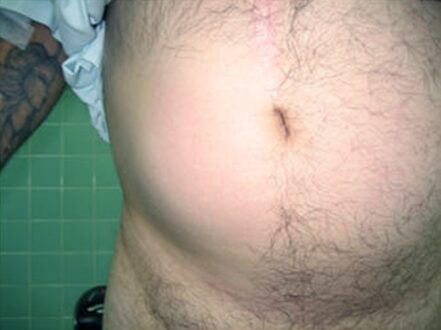
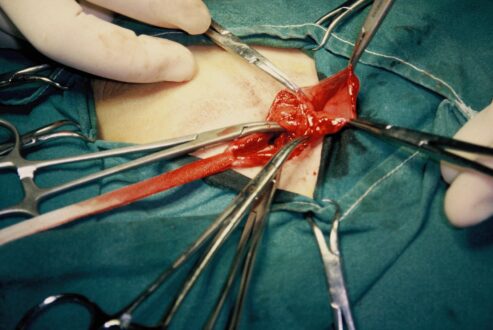
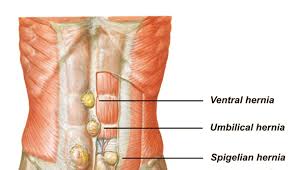
Hernia CT Scan Images
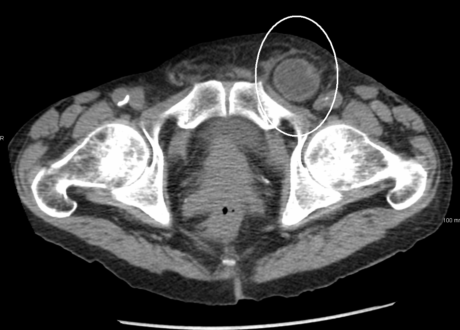

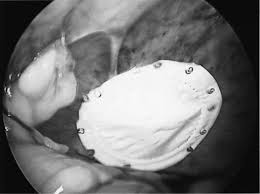
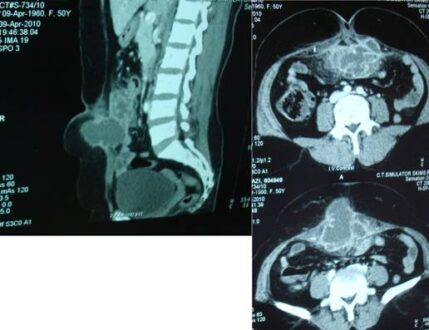
Spigelian Hernia Causes
A Spigelian hernia is caused by intra-abdominal pressure. A Spigelian hernia can also be due to any injury or trauma to the abdominal area.
Other causes include;
- Obesity
- Chronic coughing
- Multiple pregnancies
- Surgery
- Heavy lifting
Some Spigelian hernias are congenital meaning they are present at birth but they are rarely seen in children.
A Spigelian hernia can also be caused due to the weakening of abdominal wall.
Spigelian Hernia Repair Procedure
A Spigelian hernia can be repaired by four types of operative approaches;
- Conventional method
- Endoscopic approaches
- Total extra peritoneal repair
- Trans abdominal pre peritoneal repair
Conventional approach is done by doing a transverse incision over the protuberance.
In the endoscopic method, an open technique is required it is also known as “Intra Peritoneal On lay Mesh Repair” (IPOM). In this method, a verses needle is used to locate the hernia orifice and create ports with 10cm distance away from affected area.
In total extra peritoneal repair, the extra peritoneal space is created. It is done by employing 3 midline pots and the sac is identified, which completely reduces it. A mesh overlap is used by dissecting peritoneum over the accurate line creating a margin of 5cm over hernia defect.
Laparoscopic Spigelian hernia repair is also known as “laparoscopic Spigelian heliography” or. Hernia surgery. This is equipped with a video camera to guide the doctor in collecting the Spigelian hernia sac during the repair. The repairing procedure can be done in 2 hours and the patients are allowed to go home after 48 hours.
 Health & Care Information
Health & Care Information 

